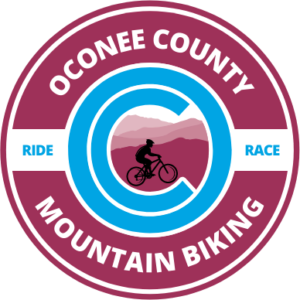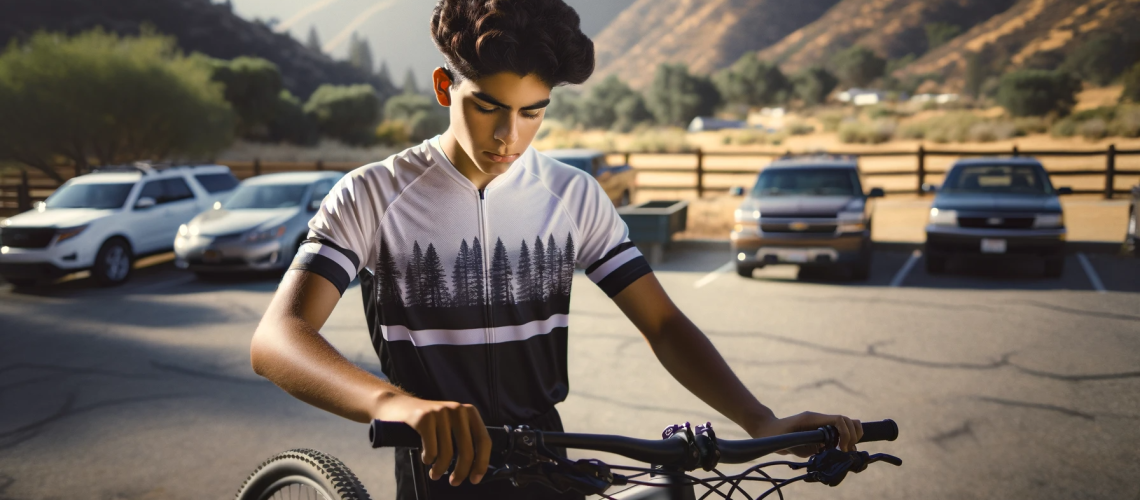Ben Franklin coined the phrase “An ounce of prevention is worth a pound of cure.” Rumor has it Ben came up with this after getting a pinch flat during an enduro race. We don’t know if that’s true, but we do know that mountain bike checks are important!
A quick and thorough mountain bike check is easy to do. All you need to remember is A-B-C-D-E. That’s right, if you know the alphabet, you’ll know exactly how to check your bike before every practice and race.
A is for AIR
Tires are a lot like humans. In order to live life to the fullest, they need air. Heading out on the trail with deflated tires is a regrettable experience. At best, you’ll get a pinch flat (or burp those tubeless tires). Worse, you’ll damage your rim, or – way worse – you’ll lose control and damage yourself. Too much air isn’t any better. A PSI that’s too high will have you bouncing off rocks and roots like a pinball.
What PSI (Pounds Per Square Inch) should you put in your tires? There’s no definitive answer because rider weight, tire volume, tubes vs tubeless, and terrain all come into play. If you ride for OCMTB and you need help figuring it out, just ask a coach. In the meantime, watch this video to learn more about dialing in your mountain’s bike’s tire pressure.
Once you know what PSI you should be running on your tires, check to make sure they’re at that pressure before every ride. To do that accurately, you’ll need a pressure gauge.
B is for Brakes
There’s nothing like the feeling of going fast on your mountain bike. Unless you can’t stop. That’s when things get scary. Brake checks are crucial. If you think your brakes aren’t working properly or need adjusting, see an OCMTB coach before heading out on the trail. Small adjustments, like brake pads rubbing, are often an easy fix. Bigger brake issues might require a trip to the bike shop. Brake failure is something you should never take chances with.
C is for Chain
Step one, check to make sure your bike has a chain. If it doesn’t, that’s going to be a big problem! We’ll assume your bike has a chain. The next step is to make sure it’s free of dirt and debris and well lubed. Here’s a great video on chain maintenance.
Finally, shift through your gears to make sure the chain isn’t skipping or dropping. If it is, the chain might be worn, or it could be an issue with your derailleur. In either case, ask an OCMTB coach to take a look. It might be time for some maintenance at the bike shop.
D is for Drop
Don’t worry, we’re not asking you to drop your bike off a cliff or anything. A drop test just means lifting your bike off the ground a few inches and letting it drop back down. Hear anything that sounds funky or loose? If so, ask an OCMTB coach to take a look (and have a listen).
E is for Ends (More specifically, bar-end PLUGS)
One of the most overlooked safety hazards on a mountain bike are missing or damaged bar-end plugs. What’s a bar-end plug? It’s a plastic or rubber plug that inserts into the end of your handlebars. Your bike likely came with them, but sometimes falls knock them out or push them deep into the bars. When this happens, the edge of your handlebars become exposed and that’s dangerous for you and other riders as well. Always check your bar-end plugs before every ride. Missing one or both? Talk to an OCMTB coach before heading out on trail.
Now that you know the A-B-C-D-E’s of mountain bike checks, make sure you perform them before every ride. Doing a pre-check only takes a few minutes, and it can save you from having to walk your bike out of the woods (which is almost always at the furthest point from the trailhead). Stay safe and ride on!

